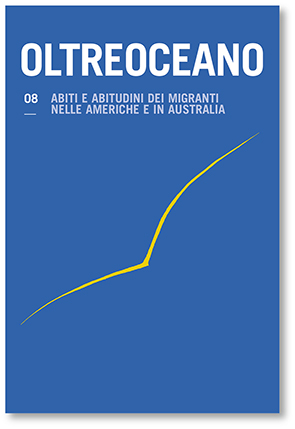Helga Crane: gli abiti di una migrante/emigrante
Keywords:
abiti, donna nera, USA, anni '20Abstract
Dopo aver prospettato la situazione degli Afro Americani negli USA dell’Harlem Renaissance, l’intervento si concentra sull’abbigliamento della protagonista del romanzo di Nella Larsen, Sabbie mobili. Nel suo periplo (Sud, Chicago, New York, Copenhagen, New York, Sud), la protagonista è discriminata o vittimizzata dagli altri (bianchi e neri) a causa del suo modo di vestire che coagula i pregiudizi riguardo a razza, genere e sessualità.
Helga Crane: A Migrant / Emigrant’s Clothes
After having sketeched the social and cultural situation of African Americans during the Harlem Renaissance, this paper focuses on the clothes worn by the protagonist of Nella Larsen’s Quicksand. From the South of the US to Chicago to New York to Copenhagen back to New York and the South, she is discriminated and victimized by both whites and blacks because of the way she dresses. Their criticism springs from their prejudices regading race, gender, and sexuality.
Downloads
References
Agnew, J.-C. (1982): A House of Fiction: Domestic Interiors and the Commodity Aesthetic. In S. Bronner (Ed.), Consuming Visions: Accumulation and Display of Goods in America, 1880-1920 (pp. 133-155). New York: Norton.
Bakhtin, M. (1984): Rabelais and His World. Bloomington: Indiana University Press.
Bourdieu, P. (1984): Distinction: A Social Critique of the Judgment of Taste. Cambridge: Harvard University Press.
Butler, J. (1993): Bodies That Matter. London: Routledge.
Dumenil, L. (1995): Modern Temper. American Culture and Society in the 1920s. New York: Hill and Wang.
Entwistle, J. (2007): Addressing the Body. In M. Barnard (Ed.), Fashion Theory (pp. 273-291). A Reader. London: Routledge.
Foucault, M. (1988): Technologies of the Self. Amherst: University of Massachusetts Press.
Foucault, M. (1995): Discipline and Punish. Trans. Alan Sheridan. New York: Vintage.
Irigaray, L. (1985): The Sex Which Is Not One. Ithaca: Cornell University Press.
Larsen, N. (1989): Quicksand & Passing. London: Serpent’s Tail.
Lauretis, T.de. (1987): Technologies of Gender. Bloomington, IN: Indiana University Press.
Mauss, M. (1973): Techniques of the Body. Economy and Society, 2, 1, pp. 70-88.
Marcuse, H. (1964): One-dimensional Man. Studies in the Ideology of Advanced Industrial Society. London: Routledge.
Nava, Mica. (1987): Consumerism and Its Contradictions. Cultural Studies, 1, 2, pp. 204-210.
Roberts, K. (1997): The Clothes Make the Woman: The Symbolics of Prostitution in Nella Larsen’s Quicksand and Claude McKay’s Home to Harlem. Tulsa Studies in Women’sLiterature, 16, 1, pp. 107-130.
Turner, B. S. (2008): Body and Society. Explorations in Social Theory. London: Sage.
Downloads
Published
How to Cite
Issue
Section
License

This work is licensed under a Creative Commons Attribution-NonCommercial-ShareAlike 4.0 International License.
The authors undertake to comply with the following conditions, which are considered accepted at the time of submission of their contributions.
The sending of a text implies that it is unpublished and not submitted to be published elsewhere.
1. If accepted, the author shall confer on the publisher the right to publish and distribute it both in paper form and in the online electronic edition. The published articles will be downloadable and made available in open access.
2. Provided that it correctly indicates that the first publication took place in the journal Oltreoceano. Rivista sulle migrazioni the author has the right to: a) reproduce the article in separate extracts or collected in a volume; b) publish the article on their personal website or teaching site provided that these sites are of a non-commercial nature; c) deposit the article in online archives of a non-commercial nature, linked to the institution they belong to or as part of projects for the non-commercial dissemination and open access of scientific works.
The use of contributions by third parties, for commercial or otherwise unauthorized purposes, is not allowed. The publisher declines all responsibility for the unauthorized use of the material published in the journal.












